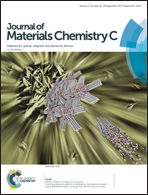Highly efficient field emission from ZnO nanorods and nanographene hybrids on a macroporous electric conductive network
Abstract
A hybrid structure comprising zinc oxide (ZnO) nanorods and nanographene on a patterned substrate enhances the field emission properties by reducing the work function, avoiding electrostatic screening, and providing more emitters. A theoretical energy-band model is fabricated to analyze the field emission process of the ZnO nanorods and nanographene hybrids. And the structure is modeled with equipotential lines and simulated by Ansys to present the advantages of the three-dimensional (3D) patterned substrate. After theoretical modeling and simulation, a simple, low-cost, and environmentally friendly method that is suitable for industrial production is developed to fabricate ZnO nanorods and nanographene hybrids on a 3D macroporous electric conductive network (MECN). The nanographene is coated on the MECN by hydrothermal carbonization to circumvent the substrate limitation and ZnO nanorods are prepared on the nanographene/MECN substrate hydrothermally. The ZnO nanorods, ∼600 nm long with a diameter of about 70 nm, in combination with nanographene show sharp edges and an ordered lattice pattern and, therefore, electrons flow from the nanographene to the ZnO nanorods and are emitted more easily. The ZnO nanorods/nanographene/MECN has highly efficient field emission properties such as a low turn-on voltage Eon of 0.5 V μm−1 at a current density of 10 μA cm−2, and a large field enhancement factor β of 25550, as well as excellent sustainability and consequently great potential in displays, lighting, and sensors.



 Please wait while we load your content...
Please wait while we load your content...